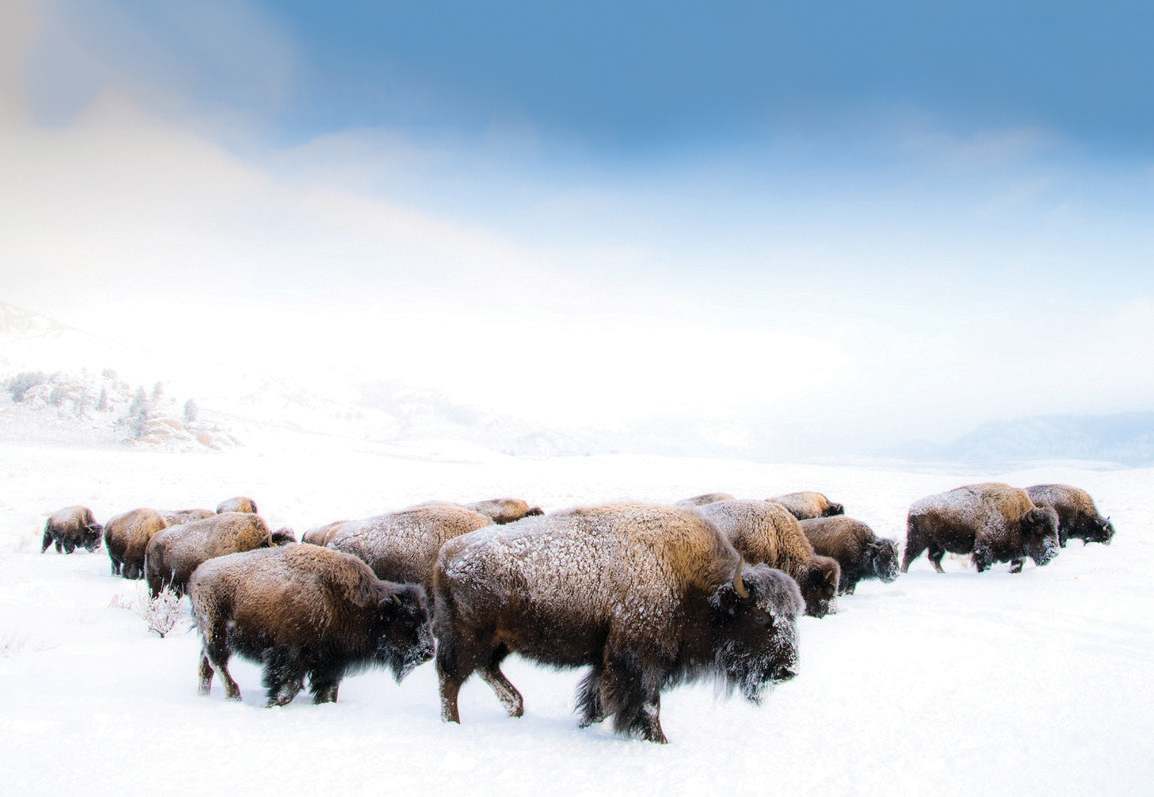
24 Nov From the Editor: Catharsis
Last winter, temperatures plunged well below zero at my home in northwest Montana. Our regular outdoor thermometer stopped at minus 40, so when I trudged out through crystalline snow to feed hay to the horses, I checked the thermometer on the pickup and my husband’s handheld GPS. Both confirmed it was 47 below.
The air was thin, and I took cautious breaths through my nose, my head and face surrounded by alpaca wool and silk in the form of a hat and scarf. The cold shocked my nose, and I could feel the freezing effect on my sinuses. And yet, a brilliant sunshine embraced me as the morning light twinkled through the hoarfrost that had collected on the land overnight. Who knows how cold it was at dawn?
Winter brings hardship to the Northern Rockies — with unthinkable cold and stifling snowfall — and yet it’s remarkable in its beauty, a necessary part of the defining character of the region. Life, miraculously, lives on. Plants and animals endure.
Bison, in particular, are noteworthy for their fortitude, having evolved strategies that keep them alive through the winter. These sentinels of the Great Plains shroud themselves in thick, wooly coats so effective that even their own body heat cannot permeate to melt snow that accumulates on the fur. During winter blizzards, when the icy wind howls, bison turn into the storm, and once it has passed, they use their large heads as snowplows to uncover the grasses and forbs on which they subsist. With a metabolism that slows in winter, bison are nourished by the dormant grasses, and through digestion, they generate internal heat that gets them through the cold.
It’s fitting, then, that the American bison is the National Mammal: The animal has endured a changing West and continues to do so, year after year, despite the storms.
Perhaps I’m looking for a connection following the publication of E. Donnall Thomas Jr.’s exploration of the Bison Range in the Fall issue, but the animal also has a serendipitous presence in this edition. Bison have been called an icon, conservation efforts have seen their restoration to select lands in the West, and ranchers are increasingly exploring their potential as a food source. Furthermore, many Indigenous communities are re-empowering themselves with a deep connection to their culture and the land, often including buffalo in that journey.
There’s something to photographer Gary Crandall’s “Buffs” in this issue’s “Images of the West” column. As he says, time with bison feels like a meditation, “finding space where everything is right again.” These big, burly beings persist, and through that, we might find inspiration.




RICHARD BONUCELLI
Posted at 15:42h, 02 FebruaryTruly the symbol of the AMERICAN WESTERN PAST